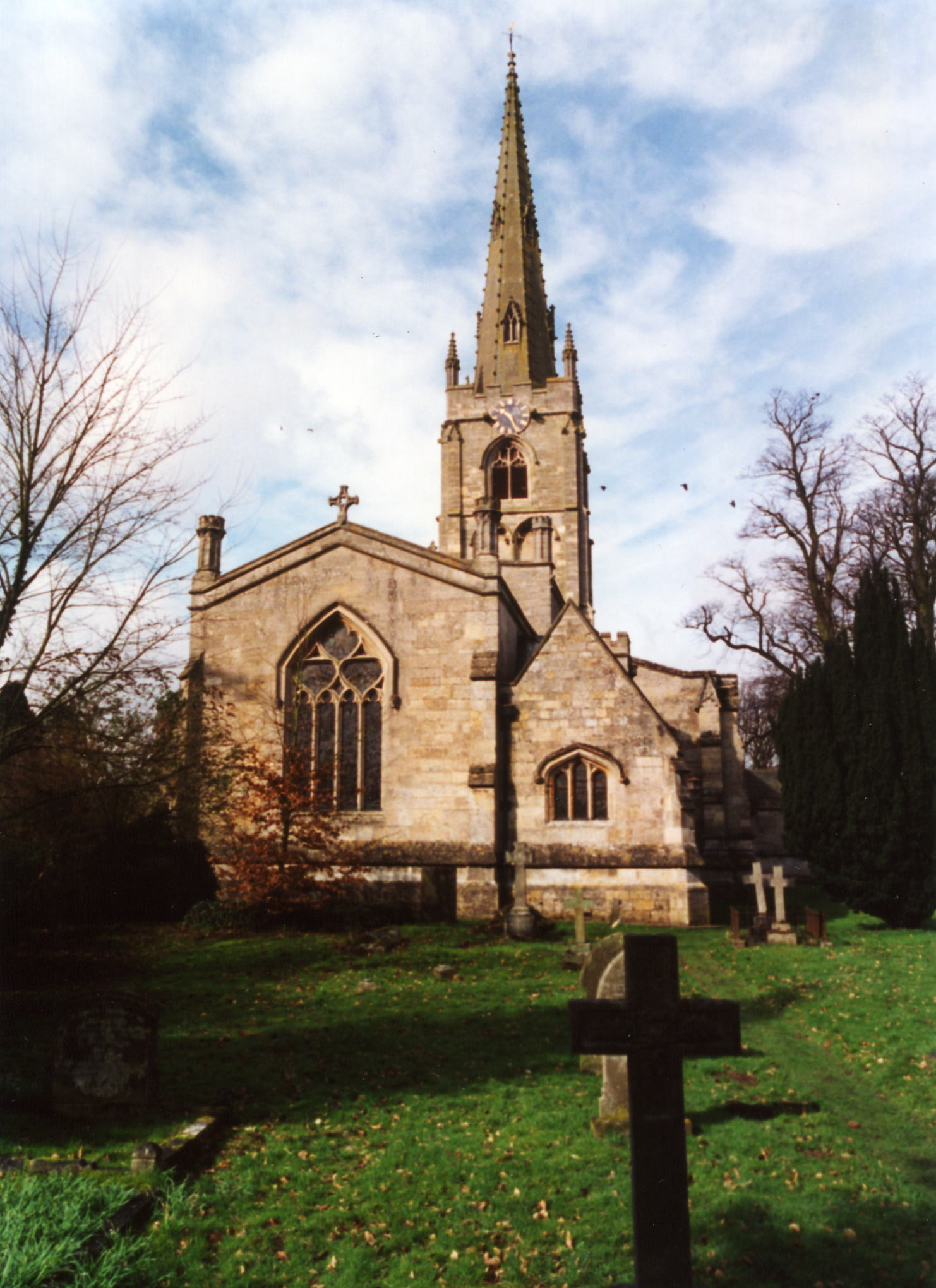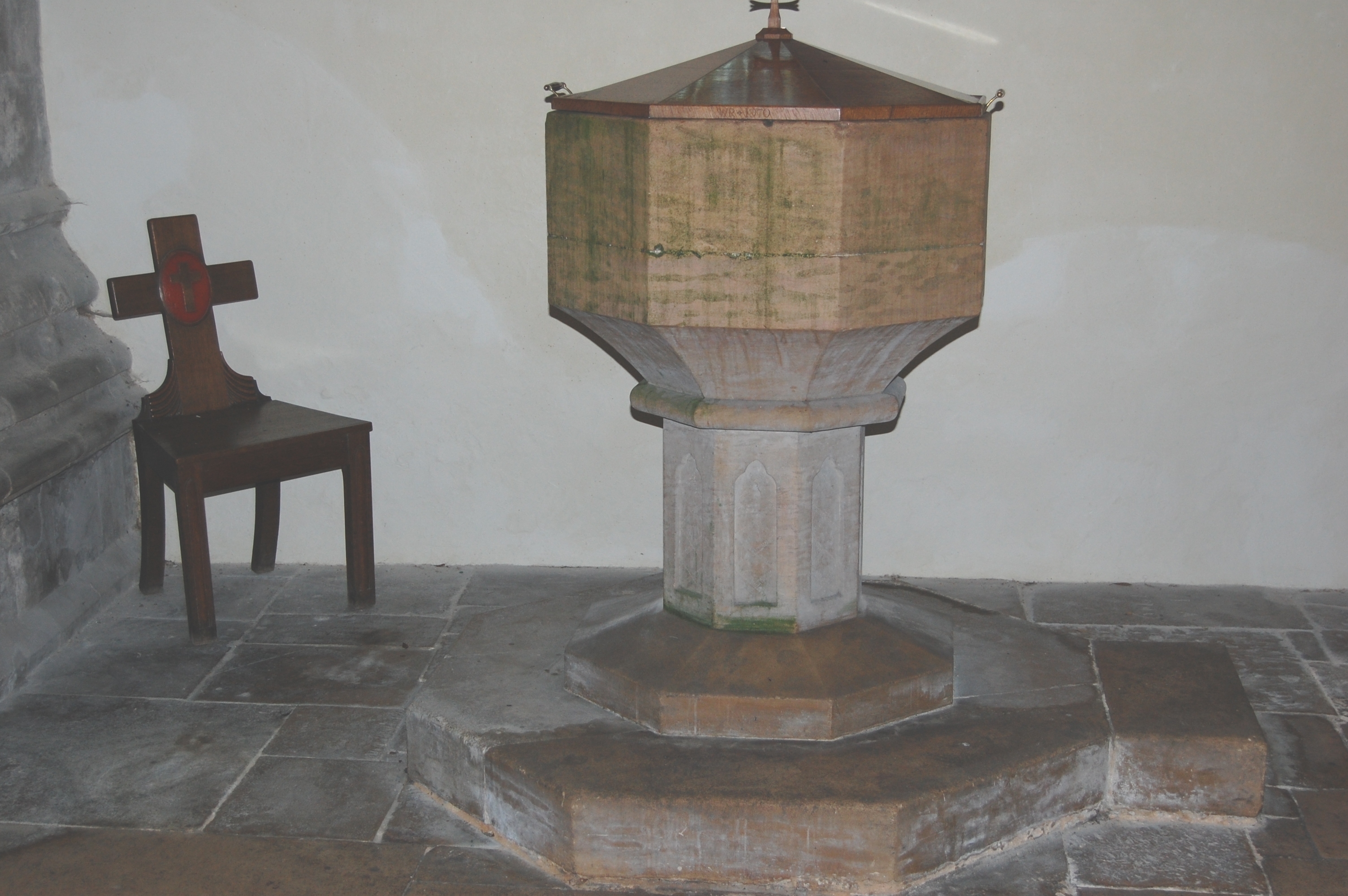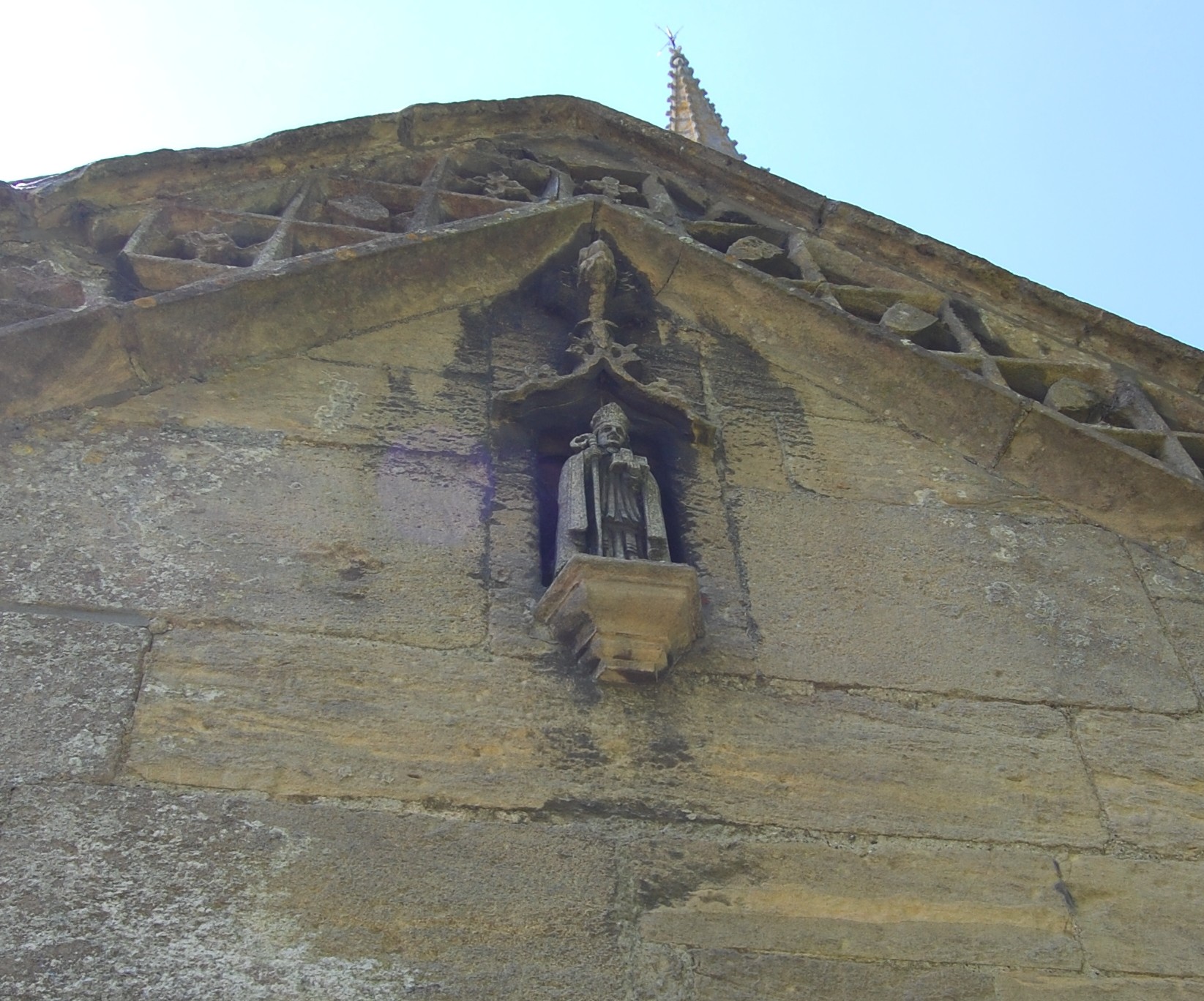Hide
Leadenham
hide
Hide
hide
Hide
hide
Hide
Hide
hide
Hide
[Transcribed from The National Gazetteer of Great Britain and Ireland 1868]
by Colin Hinson ©2020
Hide
- The parish was in the Leadenham sub-district of the Sleaford Registration District.
- Check our Census Resource page for county-wide resources.
- The table below gives census piece numbers, where known:
| Census Year | Piece No. |
|---|---|
| 1841 | H.O. 107 / 620 |
| 1861 | R. G. 9 / 2344 |
| 1871 | R.G. 10 / 3351 |
| 1881 | R.G. 11 / 3224 |
| 1891 | R.G. 12 / 2580 |
- The Anglican Church is dedicated to Saint Swithin.
- The Anglican parish church is named after Swithin (sometimes spelled "Swithun"), Bishop of Winchester, (838-862) who was buried, by his own desire, outside of Winchester Cathedral where men might walk over his grave. After canonization in 912, his remains were moved to a shrine in the Cathedral. According to legend, the saint showed his anger at being disturbed by a rain which stopped the work for 40 days. Hence the common belief that rain on St. Swithin's day, July 15th, presages a continued rain of 40 days.
- The 1086 Domesday book tells us that there was a church at Leadenham, with its own priest, at the time of the Conquest. No trace of it remains and it was likely a Saxon log on stone base structure, built after the Danes left Lincolnshire. That old structure lasted until about 1320 when it was replaced by an all-stone church.
- Henry BURGHERSH was Bishop of Lincoln from 1320 to 1340 and he wanted to see this church completed. In his Memoranda there is a promise of six weeks indulgence for anyone who will visit Leadenham, say a prayer to St. Swithun, and leave a subscription to the building fund! Burghersh was no saint and he hated the king. The downfall of Edward II occurred while this church was being built; so the Bishop put the king's effigy in the north aisle (facing the devil's domain) and placed the devil's mask on a bracket above him. But when the king was murdered in 1327 there was a revulsion of public feeling, the Bishop was in disgrace, and someone broke the devil's mask from its bracket and moved it to its present position over King Edward III.
- The website at Watsonweb tells us that Dr. John DEE, born in London, 13 July 1527, and died at Mortlake, Surrey, Dec. 1608, had the Rectorship of Long Leadenham in Lincolnshire from 1566 to the end of his life. He was an advisor to the crown on calendar reform and astrological events. He wrote The Perfect Arte of Navigation, and was one of the founders of scientific cartography in England.
- The church was thoroughly repaired in 1830 and reseated in 1861.
- The church seats 450.
- A photograph of the Anglican church is at the Wendy PARKINSON English Church Photographs site.
- Richard CROFT has a photograph of St. Swithin's Church on Geo-graph, taken in January, 2006.
- Richard CROFT also has a photograph of the Reflecting Pool showing the church tower on Geo-graph, taken in April, 2009.
- Here is a photo of Saint Swithin's Church, taken by Ron COLE (who retains the copyright):

- Here are photographs of Saint Swithin's Church, taken by Patricia McCRORY (who retains the copyright):

-

- This is a statue of a Bishop over the doorway to St. Swithin's church, taken by Patricia McCRORY (who retains the copyright):

- The Anglican parish register exists from 1558. The I.G.I. contains entries from 1561 - 1830.
- The Lincolnshire FHS has a Loan Library service which has the parish registers on microfiche for Baptisms from 1558 to 1812 and Marriages from 1558 to 1812.
- Parish registers are on file at the Society of Genealogists, covering 1558 - 1739.
- The LFHS has published several marriage indexes for the Loveden Deanery to make your search easier.
- The Wesleyan Methodists had a small chapel here, built in 1841. For information and assistance in researching these chapels, see our non-conformist religions page.
- Check our Church Records page for county-wide resources.
- The parish was in the Leadenham sub-district of the Sleaford Registration District.
- Check our Civil Registration page for sources and background on Civil Registration which started in July, 1837.
The village and parish of Leadenham lies 118 miles north of London, 13 miles south of Lincoln, 10 miles east of Newark-on-Trent and 8 miles west-north-west of Sleaford. Welbourn parish lies to the north and Fulbeck to the south. The parish contains about 3,625 acres of land. Lowfield, on the Brant River, is part of this parish. Bayard's Leap, southeast of Leadenham village (where the RAF college now resides) was an extra-parochial part of the parish until Victorian times, when it was split off into it's own parish in 1854.
The village of Leadenham (sometimes called Long Leadenham) lies on the side of a gentle escarpment. This was known in the nineteenth century as the Cliff Range and marks the edge of the Vale of Trent. Near the village is the ancient spring called "St. Anne's Well". If you are planning a visit:
- The village is at the crossroads of the road between Lincoln and Grantham, which follows the escarpment and is now the A607 trunk road, and that between Sleaford and Newark, which is now the A17 Sleaford Road. A bypass of the A17 swings south around the village.
- One source of transportation is the Lincolnshire Road Car company.
- The major industry in the village appears to be Caydor Industrial Door, Ltd, on Lincoln Road.
- Two well-known local establishments are: 1) the George Hotel at High Street, Leadenham, Lincoln, LINC, LN5 0PN, and 2) the Willoughby Arms Inn at 5 High Street, Leadenham, Lincoln, LINC, LN5 0PP.
- Visit our touring page for more sources.
The National Gazetteer of Great Britain and Ireland - 1868
- Ask for a calculation of the distance from Leadenham to another place.
- The Domesday Book shows that in 1066, Leadenham was held by Ralf "the Staller". Ralf (alternatively "Ralph") was the constable, with land for 24 ploughs of Oxen.
- A hiring fair for servants was held here in May of each year.
- In 1804 the village founded a Sick Club.
- A village feast was held annually on the first Sunday after July 2nd.
- John Key of Leadenham held the ancient office of Sheriff of the County of Lincoln in 1773.
- In the 19th century, the village had its own Railway station, on the Grantham and Lincoln branch of the Great Northern Railway.
- Check the history of the Wapentake at the Loveden Wapentake website.
- There was a "Feathers Inn" here in 1842, with John THEAKER as the proprietor. It is not mentioned in 1868 or later directories.
- The George Hotel has a long history in the parish. The photo is by Tim HALLAM. Here are the names associated with it:
| Year | Person |
|---|---|
| 1842 | John JACKSON, vict. |
| 1868 | Elijah BARNES |
| 1872 | Joseph BATEMAN, vict. |
| 1882 | Jph. BATEMAN, vict. |
| 1913 | George Robert HALL |
| 1930 | Geo. Rt. HALL, propr. |
The George Hotel in the 1881 census:
R.G. 11 / 3224 folio 89
Relationship Name Sex Age Where born head Joseph BATEMAN M 40 Lincoln, Lincolnshire wife Alice Agnes BATEMAN F 42 Halifax, Yorkshire servant Sarah Ann STEVENSON F 18 Porrington, Lincolnshire servant Fanny JACKSON F 18 Lincoln, Lincolnshire nurse Ann SPRAY F 65 Fulbeck, Lincolnshire
- Leadenham House was a large stone structure, built between 1790 and 1796 for William REEVE. It was the seat of Lieut.-Col. John REEVE, lord of the manor and owner of most of the land in the parish in 1871.
- See our Maps page for additional resources.
You can see maps centred on OS grid reference SK950522 (Lat/Lon: 53.058617, -0.583954), Leadenham which are provided by:
- OpenStreetMap
- Google Maps
- StreetMap (Current Ordnance Survey maps)
- Bing (was Multimap)
- Old Maps Online
- National Library of Scotland (Old Ordnance Survey maps)
- Vision of Britain (Click "Historical units & statistics" for administrative areas.)
- English Jurisdictions in 1851 (Unfortunately the LDS have removed the facility to enable us to specify a starting location, you will need to search yourself on their map.)
- Magic (Geographic information) (Click + on map if it doesn't show)
- GeoHack (Links to on-line maps and location specific services.)
- All places within the same township/parish shown on an Openstreetmap map.
- Nearby townships/parishes shown on an Openstreetmap map.
- Nearby places shown on an Openstreetmap map.
- Lieut.-Col. John REEVE lived in this parish in the 1870s. He was high sheriff for the county.
- The Royal Flying Corps established an airfield here in 1916, just east of the village, to help protect against Zeppelin attacks.
- The airfield was closed in June, 1919.
- The location is noted by a sign, but few traces remain.
- Glen DRURY has a photograph of the entrance to St. Swithin's churchyard on Geo-graph, taken in June, 2009. The object to the right just inside the gate is the War Memorial.
- See the Leadenham War Memorial site for a list of parishioners who gave their lives in service to their country.
- The origin of the name is uncertain, but probably comes from the Old English Leodan+ham for "homestead or village of a man called Leoda." It appeared in the 1086 Domesday Book as Ledenham.
[A. D. Mills, "A Dictionary of English Place-Names," Oxford University Press, 1991]
Here's a newspaper clipping mentioning the village. Unfortunately, the newspaper's name is lost, but the date is 27 Oct. 1917. Right-hand columns are incomplete but I think it's possible to work out most of the context. I've used * to indicate gaps of lengths I could only guess at.: Diane Maltby
LEADENHAM
FIRE.- On Monday, a h* ham was discovered to b* Mrs. Hall, who sent for* he forced open the door, * that the fire had broken ou* but a few pails of water s* it. The tenant, a man * Clark Exton, had left t* that morning, when all * safe. The damage done w*
- Wellbourne and Leadenham villages have close ties, including a joint magazine called 'The Two Villages'.
- This place was an ancient parish in Lincoln County and became a modern Civil Parish when those were established.
- The parish was in the ancient Loveden Wapentake in the North Kesteven division of the county, in the parts of Kesteven.
- In August, 1882, the area called Maidenhouse was transferred to Fulbeck Civil Parish.
- You may contact the local Leadenham Parish Council regarding civic or political issues. Be aware that they will not assist with family history research.
- For today's district governance, see the North Kesteven District Council.
- Bastardy cases would be heard in the Sleaford petty session hearings every Monday.
- Richard HANDLEY left a bequest of land for the poor in 1657.
- After the Enclosure in 1778, the parish generated income by leasing land and obtained about £80 per year.
- John KEY left a bequest of land for the poor in 1784.
- William REEVE left a bequest of £10 for the poor in 1820.
- After the 1834 Poor Law Amendment Act reforms, the parish became part of the Sleaford Poor Law Union in 1836.
- General REEVE invested £200, the interest to go to the poor in 1856. That was increased in 1868 by Lieut.-Col. William Henry REEVE by £500 and in 1869 by Lieut.-Col. John REEVE who invested £500 more.
- The first public elementary school was built here in 1857 for up to 130 children.
- Leadenham Church of England Primary School is a small rural village school of some 50 pupils. It is located on Main Road, Leadenham, Lincoln LN5 0QB, and can be contacted at: Tel/Fax: 01400 272702.
- For more on researching school records, see our Schools Research page.
